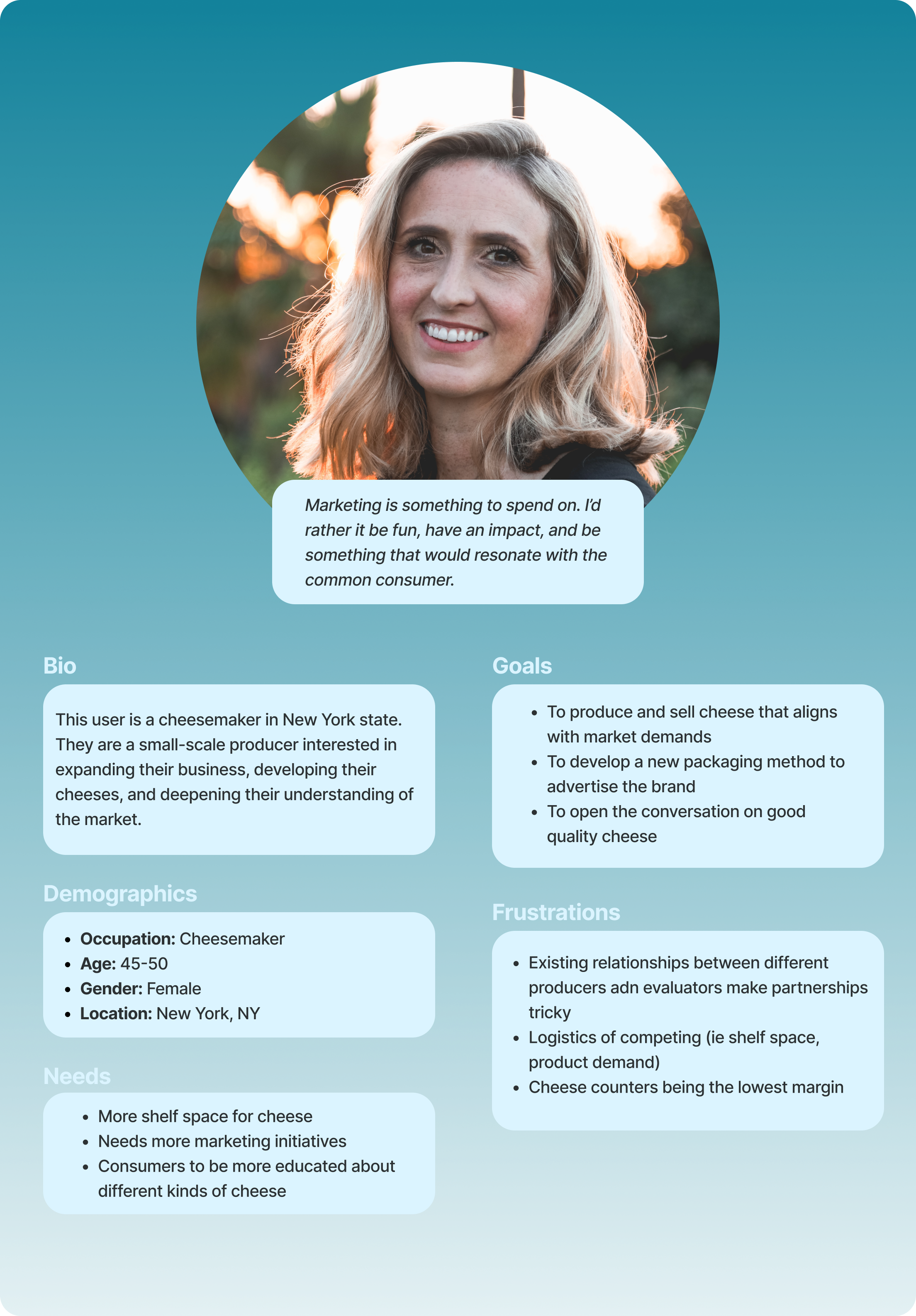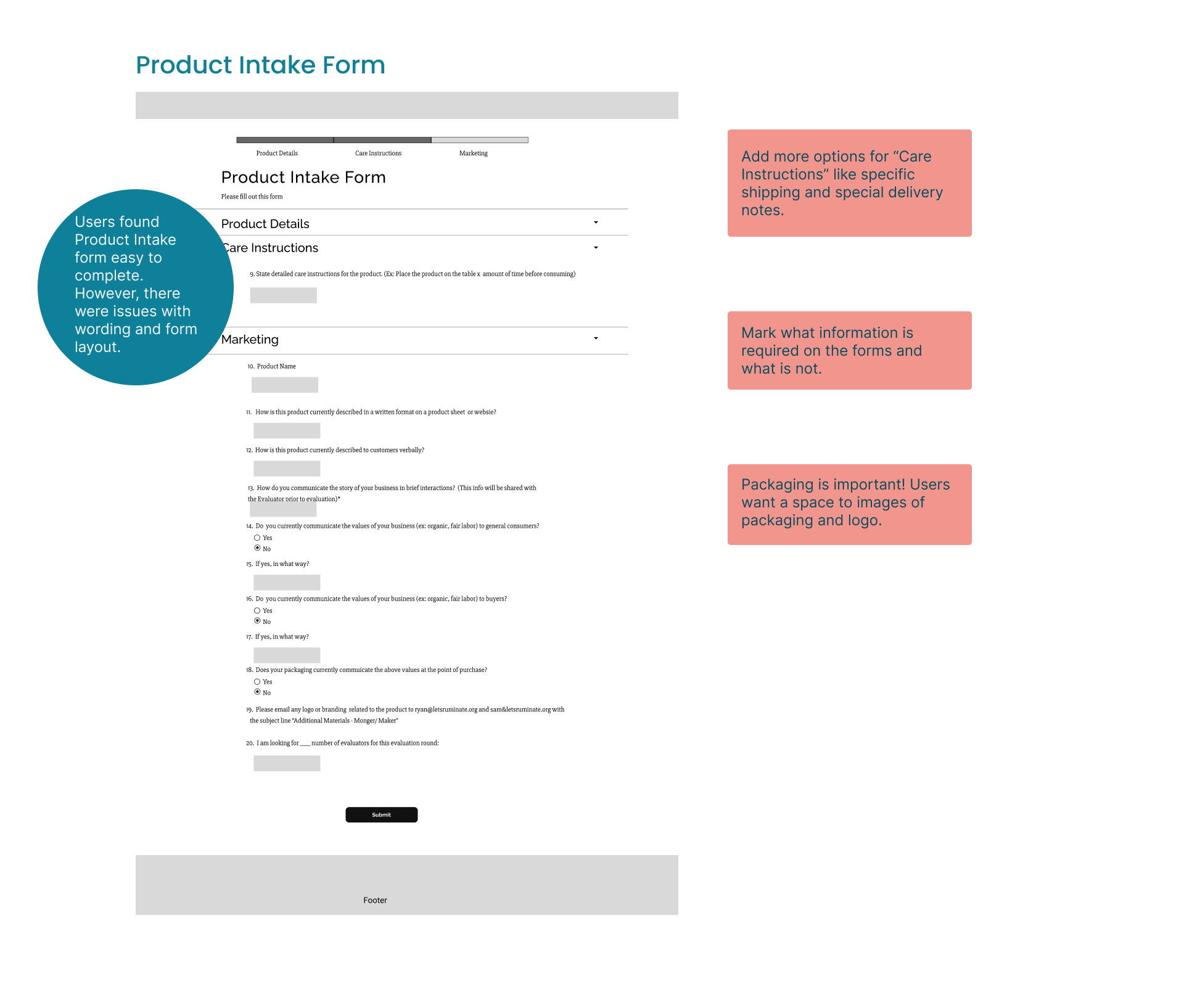RUMINATE + TECH FLEET
PROJECT OVERVIEW
ABOUT RUMINATE + TECH FLEET
Ruminate is a nonprofit that connects small scale food producers with product evalutors. Ruminate partnered with Tech Fleet to create an MVP of their onboarding platform that connects, registers, and approves both farmers and product evaluators.
RESEARCH CHALLENGE
My team and I participated in the first of three phases of product development. In this first phase, our main challenges were:
- Organizing and Synthesizing previous data from the clients
- Drafting a Research Plan that would uncover user insights and satisfy client goals
- Understanding and outlining potential user motivation, needs, pain points with Ruminate's new platform
- Helping the design team translate research findings into efficient design solutions
ROLE
UX Research Apprentice:
- Contributed to the development of the research plan
- Coordinated and sourced users
- Conducted user interviews and usability tests
- Synthesized research findings
- Presented research findings to designers, strategists, developers, and the client
TEAM
- Nolawi Taddesse: Team Lead
- Yu-Chen Chiu: UX Research Apprentice
- Emily Ho: UX Research Apprentice
- Yeganeh Aghazamani: UX Research Apprentice
TIMELINE
8-week design sprint
Synthesizing Previous Data
Affinity Map
My team and I went through previous user interviews conducted by the stakeholder. These users had participated in Ruminate's pilot program that took place in 2019. We wanted to get a better understanding of the kind of the challenges user faced when seeking feedback, developing a new product, and creating a marketing strategy.

We found that users need help with their overall business strategy. This means that they need product evaluators who could help them understand how products will fit into local/national markets, whether or not their product cost-efficient, and how to plan for business and product growth.

First Draft Personas
We created 2 first draft personas to help us develop and frame our research plan. These personas informed our questions for usability testing and user interviews and allowed the design team to begin their initial prototyping and mapping of the onboarding experience.


Research Plan Development
Research Plan
Our research plan went through several iterations as we took into consideration stakeholder needs, time constraints, and access to users. Ultimately, we created the following goals and steps:
Goals

Understand current and potential user experiences (producers and evaluators) with existing product evaluation tools and processes.

Understand user pain points, needs, and goals when requesting product evaluation (producers) and making evaluations (evaluators).

Use research to align user and business needs to inform the design of the new Ruminate platform.
Process

Usability Testing on Mid-Fi prototype and User Interviews with both producers and product evaluators.

Card Sorting exercise to aid in the development of the platform's Information Architecture and Site Map.

Usability Testing on Hi-Fi prototype and User Interviews with both producers and product evaluators.
Usability Test Mid-Fi
Findings
We tested our initial prototype with 4 users. Users generally found the Sign Up and Evaluation Request Form easy to navigate. However, there were several major pain points experienced by users.

100% of users had a hard time understanding what Ruminate is, how it could help their business, and the full range of services Ruminate offers.

100% of users felt the Sign Up form and Product Evaluation form were too wordy.

50% of users wanted more space to explain what kind of help they need with their product and why.

75% of users found the forms easy to navigate.




Card Sorting
Card Sorting Exercise
We conducted 2 rounds of a card sorting exercise using Optimal Sort. The first round was an open sort with 10 participants, the second round was a closed sort with 10 participants. This exercise helped established the overall layout of the platform and user flows for both producers and product evaluators.
Information Architecture

Producer Site Map

Evaluator Site Map

Usability Testing Hi-Fi
Findings
We tested our Hi-Fi prototype with 6 users. Overall, users were excited about the potential of a platform like Ruminate but needed clarification on the language in some of the CTAs, the Product Intake form, and the Pricing Plan page.

100% of users had issues with CTAs. Issues included color and contrast, font size, and unlcear content.

50% of users had issues navigating and understanding pricing information.

30% of users were concerned about time commitments (filling out forms, uploading info, and filling out evaluations).

100% of users enjoyed the minimal visual appearance of the site.



Next Steps
What's next for Ruminate?

Usability testing on content and wording of the overall site. Including: CTAs, Form Questions, Site Map, and the platform name Feedback.

Develop sample evaluations to aid new product evaluators in the evaluation process.

Test user flow placement and language of the pricing page. How will this impact the adoption rate of Ruminate’s services?